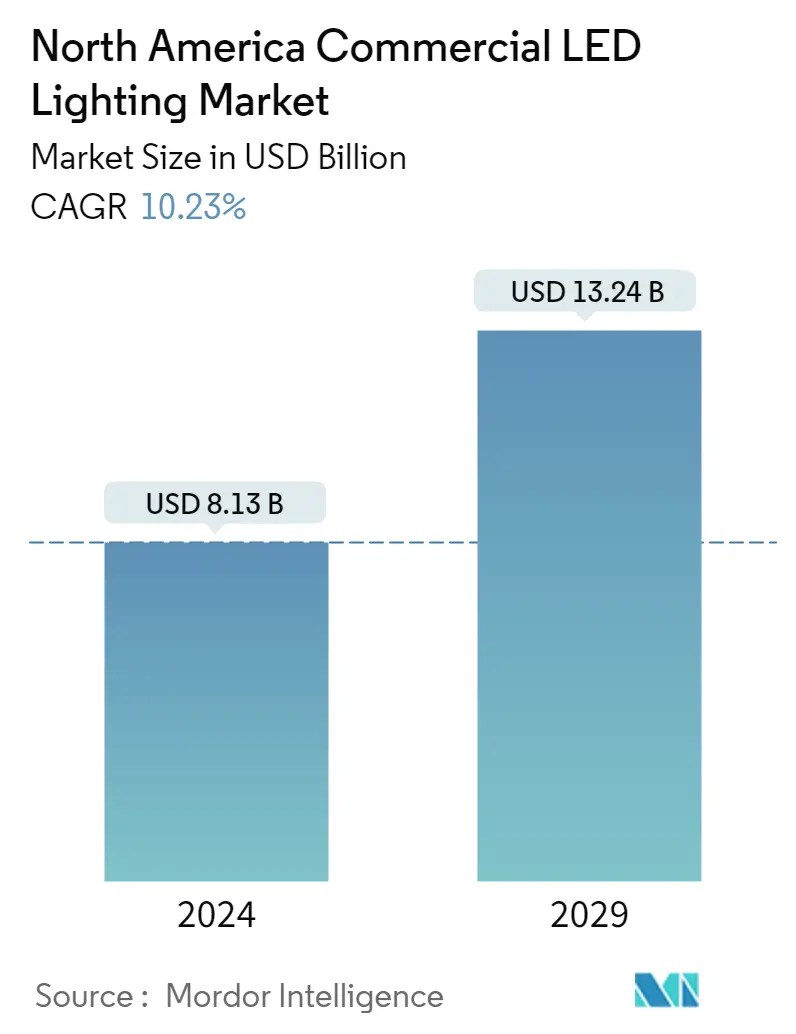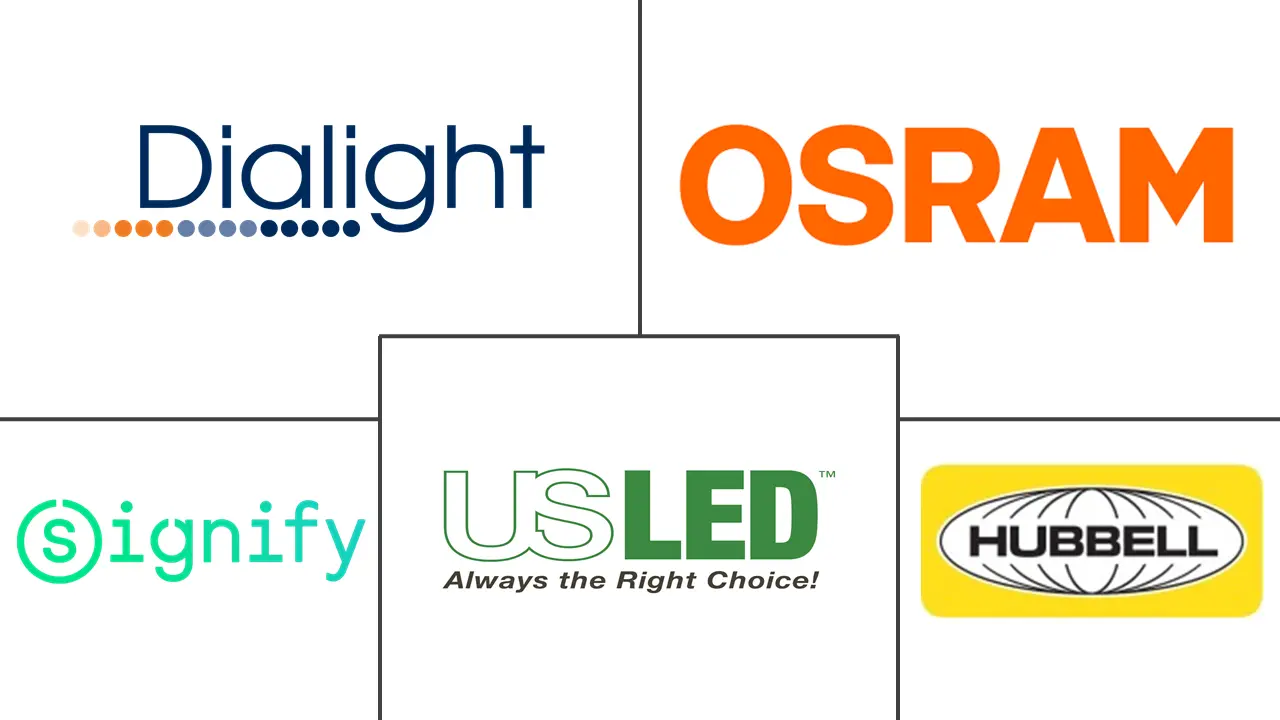Market Size of North America Commercial LED Lighting Industry

| Study Period | 2019 - 2029 |
| Base Year For Estimation | 2023 |
| Market Size (2024) | USD 8.13 Billion |
| Market Size (2029) | USD 13.24 Billion |
| CAGR (2024 - 2029) | 10.23 % |
| Market Concentration | Low |
Major Players
*Disclaimer: Major Players sorted in no particular order |
Need a report that reflects how COVID-19 has impacted this market and its growth?
North America LED Lighting Market Analysis
The North America Commercial LED Lighting Market size is estimated at USD 8.13 billion in 2024, and is expected to reach USD 13.24 billion by 2029, growing at a CAGR of 10.23% during the forecast period (2024-2029).
Technological advancements and rising concerns over environmental protection have propelled the need for energy-efficient lighting products for commercial, industrial, and residential applications across North America.
- North America houses important factors essential to commercial area lighting. The requirements are greater light coverage in the lumen, increased durability, and the right power source. LED can address those key requirements. Thus, it is preferred over other existing technologies. It has higher fuel savings, wider light coverage, and more than 100,000 lumens and is comparatively cheaper to own and maintain.
- The integration of intelligent features for connected lighting is emerging as one of the significant drivers in the studied market, as LED is one of the major components. Government initiatives for smart cities contributed to the rising demand for smart lighting solutions. Connected lighting systems are anticipated to emerge as one of the most critical components of the smart city infrastructure.
- According to the Department of Energy (DOE), LED is a highly energy-efficient lighting technology and has the potential to change the future of lighting in the United States fundamentally. The widespread use of LED lighting has a large potential impact on energy savings in the US. Further, by 2035, the majority of lighting installations are expected to use LED technology.
- Retail stores, offices, and Government aided sectors such as public properties are gaining traction in implementing LED solutions on a large scale to reduce energy consumption and increase energy utilization efficiency. For instance, in June 2021, Fluence by OSRAM and Prospiant, a Cincinnati, Ohio-based provider of complete ecosystems for controlled environment agriculture (CEA) and extraction technologies, announced that Fluence would serve as the preferred LED technology supplier within Prospiant's full ecosystem offerings.
- Additionally, Canada is anticipated to grow faster over the forecast period. The growth in the region can be attributed to the rise in real estate infrastructure development and investments across Vancouver and Toronto. The increasing adoption of advanced A-lamps and T-lamps across commercial space is driving market growth in the region.
- Since the outbreak of COVID-19, various businesses have faced challenges in the supply chain. The LED industry was no exception. As a prominent share of the raw materials for producing LEDs and drivers originated from Asian countries, the industry was significantly affected during March and April, as the region was under the severe clutches of the COVID-19 pandemic.
- However, owing to the increase in import duties from China, several companies have started shifting production lines, and sourcing LED lighting solutions and components from other countries, which has further increased the installation cost of manufacturing facilities and the bargaining power of the raw material suppliers.
- To attract industrial customers, customizing light output in accordance with the environment is a common trend among manufacturers. Hence, tunable LED lighting solutions have been witnessing improved adoption in the last few years. In the United States market, mergers, acquisitions, and collaborations are prevailing trends adopted among the market players for product innovation and inorganic growth.
